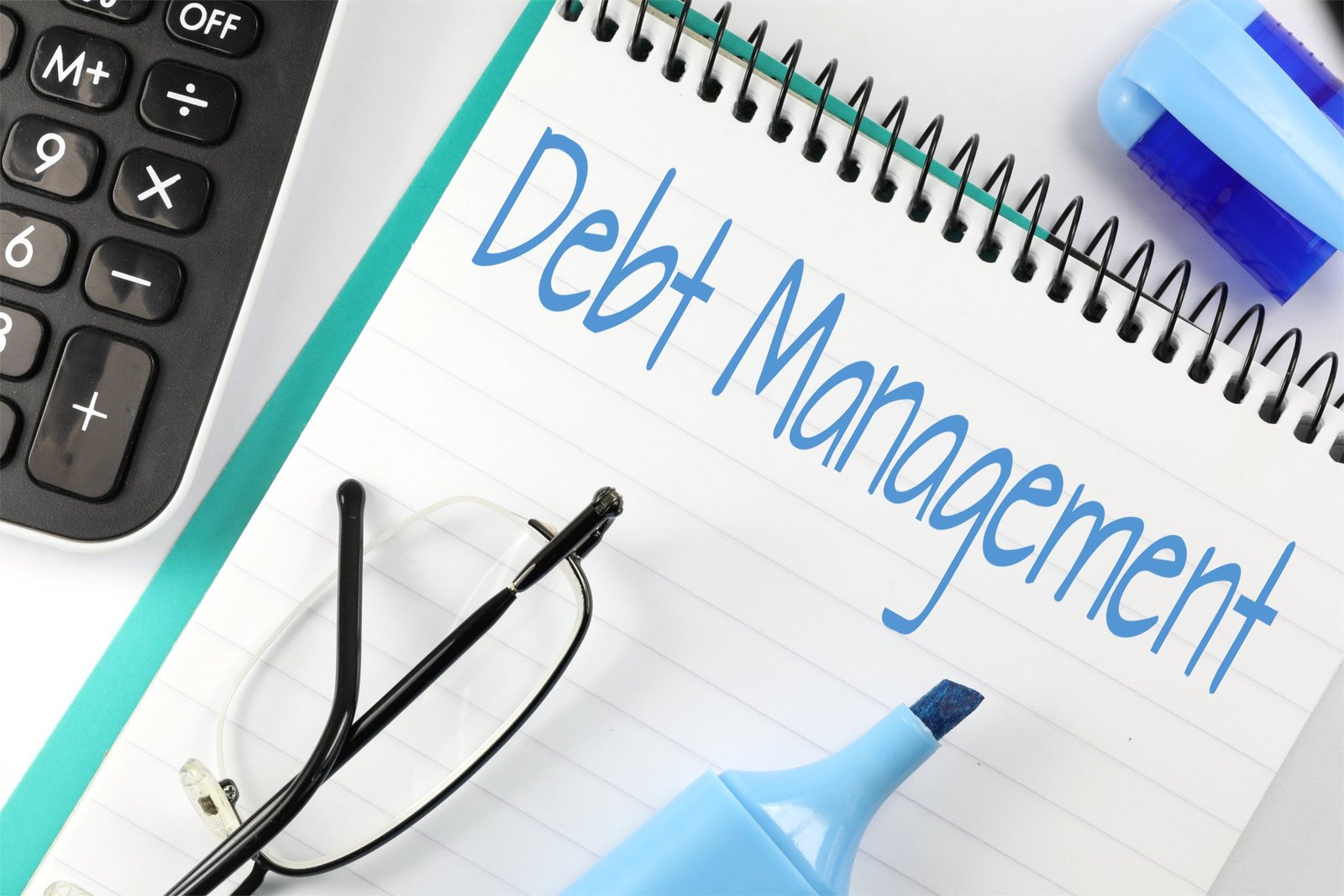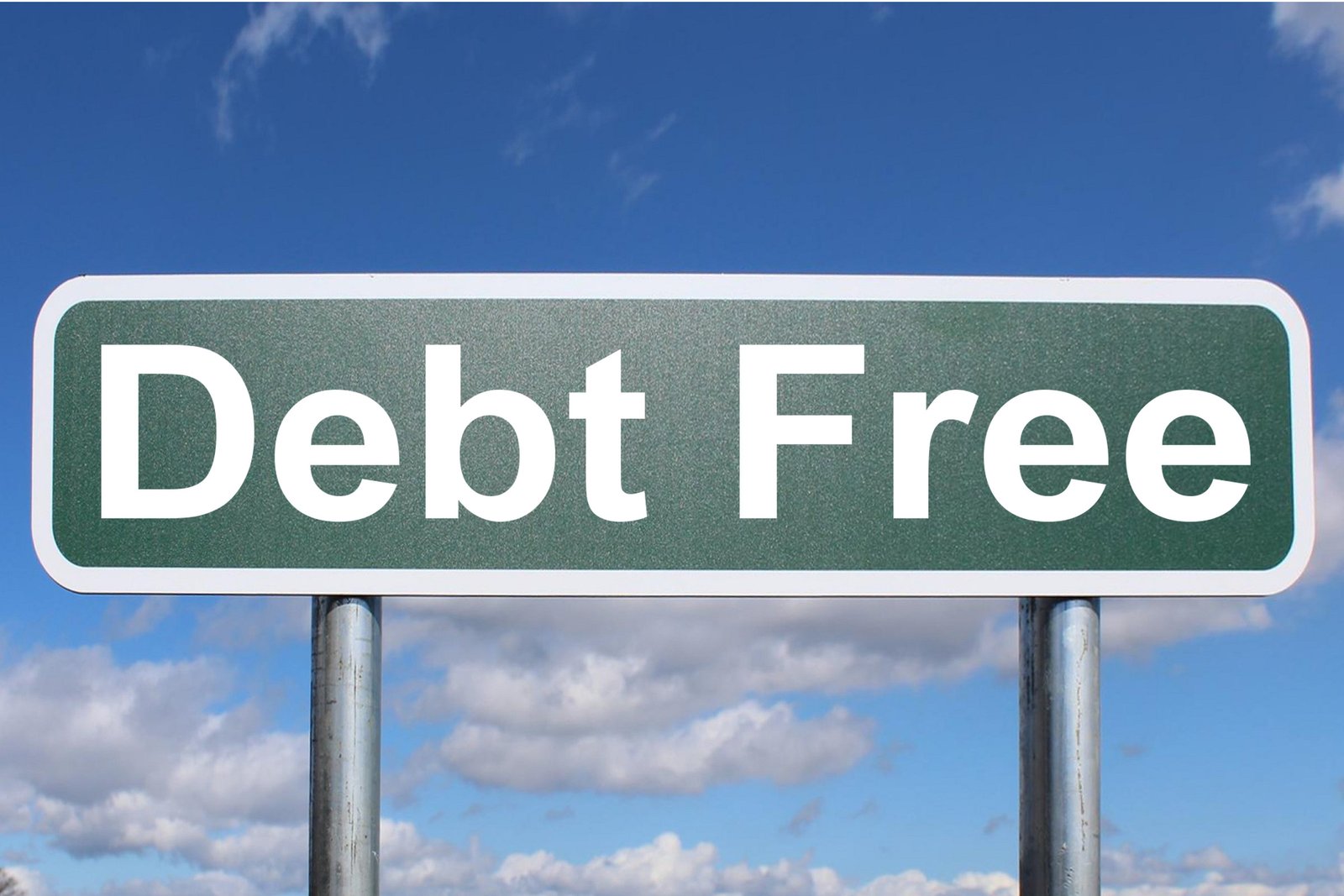Understanding Debt Management
Impact of Poor Financial Planning
Let’s face it—money management isn’t everyone’s forte, but without a decent strategy in place, things can get messy real quick. You’re out there minding your own business, then suddenly BOOM!—you’re relying on loans to get by because you’ve overspent again. This cycle isn’t just frustrating; it’s blocking your savings for emergencies, retirement, or even just getting through the week without sweat. You know what they say about robbing Peter to pay Paul? Yeah, that’s what it feels like trying to juggle multiple loans and not enough dough to go around.
But it’s not just your wallet that feels the pinch. Poor money planning can have you looking like a deer in headlights when bills, especially medical ones, pile up. And trust me, nobody wants to be featured in the bankruptcy section of their life story. It messes up future financial choices in a major way, trust (Dezerv).
Wanna steer clear of these pitfalls? Wise financial routes can prevent scenarios where you can’t save for retirement or sudden crises. When your funds go rogue, you might end up parting ways with your house or leaning on others more than you’d like. Keeping a cool, steady household budget is key. Overspending and maxing out credit cards? That’s a one-way ticket to debt city. Need a game plan? Our guide on debt management programs has got some useful moves.
Consequences of Mismanaged Funds
Mismanaged funds are no joke. They can blow up into debt mountains that look impossible to climb and take a toll on you physically and mentally, maybe even get your social life wrapped up in some drama (Dezerv). Stress from this can cause anxiety, depression, and sleepless nights. Not ideal if you’re trying to stay sharp and on your game.
Interest rates are like that fickle friend—you know, the one that’s different every time you see them. If they rise, it just means your debt costs more and your wallet’s gonna feel lighter every month. But if they drop, hey, it’s not all bad; less money goes out the door each month (Bankrate).
Ah, and the kind of debt matters too. If you’ve got collateral backing a loan, your rates are probably friendlier. But no collateral? Then you’re looking at higher interest rates, which translates to bigger monthly chunks and more interest paid over time (Bankrate). Curious about how different debts stack up? Peek at our section on secured vs. unsecured debt for the scoop.
Get a handle on these elements, and you’ll be in a sweet spot to tackle financial hurdles and adopt successful debt management strategies.
Debt Collection Techniques
Ever tried wrangling debt and felt like you’re trying to corral a herd of cats? Yep, it’s a wild ride. Let’s chat about some slick strategies that’ll make your debt collection journey smoother, from dodging common pitfalls to embracing the mysterious 7-7-7 rule.
Challenges in Debt Collection
Debt collection can feel like a never-ending circus act. On one side, you’ve got a mountain of overdue accounts; on the other, the ticking clock mocking your every move. Trying to reach out to debtors who’ve perfected the art of going MIA only makes it trickier (HighRadius).
The usual suspects include:
- Volume Overload: Swamped with overdue accounts? Join the club.
- Time Crunch: When 24 hours feels like a laughably tiny window.
- Ghosting Debtors: You call, you email, they vanish.
- Loose Tracking: Playing catch-up with inconsistent follow-ups.
Benefits of Automation Tools
Here’s where technology swoops in like your knight in shining armor. Automation tools take the mundane out of manual debt collection, letting you catch up on life and maybe binge-watch that series you’ve been missing (HighRadius).
Why automation is your new best friend:
- Timely Nags: Automated nudges mean no deadline’s ever dangling.
- Real-Time Intel: Up-to-the-second updates on payment status.
- Spot-On Reports: Make smart moves with data-rich insights.
- Efficiency Boost: Clear your docket for what really matters—like that cup of coffee waiting for you.
The 7-7-7 Rule for Debt Collection
Enter the 7-7-7 rule, your secret weapon in the debt-collecting game. It’s a systematic way to whittle down debts and has a snazzy name to boot (HighRadius).
Here’s the lowdown:
- Within 7 Days: Hit up the debtor within a week of overdue status.
- 7 Tries: Make seven attempts to connect over seven weeks.
- 7-Month Goal: Get that debt handled by the seventh month.
This approach ups your chances of success, and nobody wants to be stuck in debt quicksand, right?
Effective Debt Collection Strategies
Mixing up your strategy can feel like picking toppings for your sundae—each option has its own tasty benefits. Let’s check out some tried-and-true techniques (HighRadius):
- Reach Out Regularly: Build relationships, not tension.
- Spell it Out: Clarity in payment terms guards against head-scratchers later on.
- Flex those Options: Cater to the ups and downs of your debtor’s finances.
- Tackle the Big Ones First: Bigger debts and oldies need your immediate attention.
- Go Tech-Savvy: Let automation take care of reminders and updates, freeing you up for more high-fives.
| Strategy | Benefit |
|---|---|
| Reach Out Regularly | Keeps debtors in the loop, stopping unpaid dues from being lost in time |
| Spell it Out | Clear terms mean fewer calls with “I didn’t understand!” vibes |
| Flex those Options | Works with debtor realities, not against them |
| Tackle the Big Ones First | Hones in on risky accounts and ramps up recovery efforts |
| Go Tech-Savvy | Automation ensures no stone’s left unturned in the tracking tundra |
For deeper dives into conquering your personal debt gremlins, check out debt management programs and peek at our debt consolidation options to build your financial fortress. Remember, getting your money matters in line isn’t just about stability; it’s about boosting your financial mojo.
Debt and Interest Rates
Getting a handle on how debt and interest play together is key if you’re looking to master your money mojo. Here, we’ll chat about the ups and downs of how debt and rates get along, what happens when rates take a hike or a dip, and the scoop on secured versus unsecured debt.
Debt and Interest Rate Dynamics
Think of interest rates like the meter running on a taxi—only, it’s the cost of borrowing dough. When rates go up, borrowing feels more like a luxury cruise: pricier. That means those monthly bills of yours take a leap up (Bankrate). Flip it around, and you find lower rates making everything feel like a bargain sale, easing your cash flow burden.
Here’s a clear-as-day example:
| Interest Rate (%) | Monthly Payment ($) on a $10,000 Loan |
|---|---|
| 3% | 290 |
| 5% | 300 |
| 7% | 320 |
See? When rates spike, payments hike.
Effects of Interest Rate Changes
Interest rate changes can really mess with the total price tag on your debt. Jackpot if the rates go down: you’re shelling out less. Bummer when they climb: it costs more over time (Bankrate).
Higher rates rub salt in the wound for folks hoping to borrow, especially since lenders might only give a thumbs-up if your credit score’s impressive. With lower rates, even the lender’s Scrooge-like tendencies might ease up (Bankrate).
In a pickle with changing rates? You might wander into debt management programs for a chat with the pros.
Secured vs. Unsecured Debt
Here’s where the rubber meets the road with managing debt:
Secured Debt: It’s like borrowing with a backup plan—a house or a car is the collateral. Fail to pay, and the lender plays repossession, but it generally means you’ll deal with lower interest rates. It’s a smoother ride when compared to its unsecured kin (Bankrate).
Unsecured Debt: No collateral here, so lenders charge higher interest for taking the plunge. We’re talking credit cards and personal loans concocted with a side of risk (and a hefty interest bill for you) (Bankrate).
| Debt Type | Example | Interest Rate | Collateral Required |
|---|---|---|---|
| Secured Debt | Mortgage | Lower | Yes |
| Unsecured Debt | Credit Card | Higher | No |
To untangle unsecured debts, take a look at dealing with credit card debt or give debt consolidation options a whirl. Student loan headaches? Student loan debt management links might just be your ticket.
Mastering these basic moves will smoothen your path to waving goodbye to debt—and maybe even allow you to rest easy while paying it back.
Personal Debt Management
Wrestling with debt can feel like being stuck in quicksand, but with the right game plan, you can pull yourself out. Let’s jump into the nitty-gritty and see how to tackle your debt head-on.
Debt Consolidation Strategies
Think of debt consolidation as a magic trick where you blend all your IOUs into one neat package, ideally with a lower interest rate. This move makes life simpler by shrinking those monthly payments. You’ve got choices, like personal loans, balance transfer cards, or home equity loans. Curious for more? Check out our debt consolidation options.
| Debt Type | Interest Rate (%) |
|---|---|
| Credit Card Debt | 15 – 25 |
| Student Loan Debt | 4 – 7 |
| Personal Loan Debt | 10 – 15 |
| Home Equity Loan Debt | 3 – 6 |
Successful Debt Management Stories
Nothing cheers you up like a good comeback story. Take Sarah, who swapped stress for success by using a debt consolidation plan and tackling her finances like a pro. She turned her financial mess into a message of hope, thanks to strategies and tools like those from Fastercapital. If Sarah can do it, so can you!
Debt Management for Individuals
Everyone’s wallet has its quirks, so cookie-cutter solutions won’t cut it. Here’s how to whip your debt into shape:
- Target High-Interest Monsters: Use the avalanche method to squash the nastiest interest rates first.
- Sweet Talk Your Creditors: Don’t be shy about asking for lower rates or easier terms.
- Boost That Bank Balance: Kick up your earnings with a side hustle or selling stuff you don’t use.
- Professional Help to the Rescue: Get expert insights with debt management programs.
Wanna battle those bills some more? Dive into our guide on taming credit card debt.
Debt Management Assessment Tools
Before you run, you’ve gotta learn to walk. That’s where assessment tools are your best buddies, helping you to take stock of income, outgoings, and debts. They’re your compass to the best debt-busting strategies.
| Tool Type | Features |
|---|---|
| Debt Calculator | Pinpoints payoff dates and interest saved |
| Budgeting App | Keeps tabs on money in and out |
| Credit Report Monitoring | Sends credit score updates |
| Debt Payoff Planner | Lays out and shows your debt roadmap |
Choosing the right tools can be your ticket to breaking free from debt. Got student loans hanging over your head? Visit our student loan debt management section for more handy tips.
Grab these strategies and tools to reclaim your financial groove and pave your way to a money-healthy life.
Business Debt Management
Strategies for Businesses
Keeping your business’s debts in check is as important as keeping your morning coffee strong. Here’s the plan that’ll help:
- Spell Out Payment Rules: Let your customers and suppliers know the deal upfront. No surprises means no headaches over payments.
- Peek at Their Wallet: Before shaking hands, make sure to run credit checks on new customers. Better safe than sorry when it comes to their ability to pay.
- Keep an Eye on the Dough: Regularly peek at your cash flow so you’re not caught empty when bills are due.
- Roll Up the Tabs: Think about bundling all those pesky debts into one loan, ideally with a lower interest rate. Check out more juicy details on debt consolidation options.
- Tweak Those Terms: Have a chat with creditors to see if you can set up payment terms that won’t keep you up at night.
- Trust the Pros: Sometimes, things get sticky. That’s when financial wizards can step in. Find out more in our debt management programs.
Debt Management Practices
Jumping into good habits with your debts is like flossing—it keeps things clean and tidy. Here’s the toolkit:
- Pay Smart: Always aim to zap those high-interest debts first. Less interest equals more dollars in your pocket.
- Sweet Talk Lenders: Don’t be shy—call your lenders and see if you can sweeten those interest rates.
- Bundle Up: Simplify your life by merging multiple annoying debts into one manageable loan.
- Fat Up the Bank: Look for ways to increase your income or cut costs so you’ve got enough cash to swing around.
- Phone a Friend: In tricky scenarios, get advice from folks who know the ropes better than anyone.
| Debt Management Practice | What It Means |
|---|---|
| Pay Smart | Zap those high-interest debts quickly |
| Sweet Talk Lenders | Chat up your lenders for better rates |
| Bundle Up | Simplify with one easy-to-manage loan |
| Fat Up the Bank | Hunt for extra income or slash bills |
| Phone a Friend | Call on advisors for top-tier help |
Debt Management Advice for Businesses
Bringing in the big guns—financial advisors or debt whizzes—can really sort things out. They dish out advice that’s custom-tailored and practical, no matter if you’re drowning in debt or just looking to sharpen up your repayment game.
By folding these tactics into your daily routine, you’re setting your business up to face debt head-on and come out the other side with your finances looking sharp. Don’t forget to peek at our debt consolidation options for the nitty-gritty and dive into debt management programs to find the best fit for your business.
Debt Sustainability Analysis
Alright, let’s talk about navigating the ups and downs of debt, be it your hefty student loans, those pesky credit card balances, or the mortgage that never seems to shrink. Debt Sustainability Analysis (DSA) is your secret weapon in the fight to keep your finances on the straight and narrow.
Why Bother with DSA?
Think of Debt Sustainability Analysis as the crystal ball for your financial life. It scouts out the trouble spots and helps you sidestep financial quicksand. Without DSA, it’s easy to wander into financial chaos, but with it, you’re more like a strategic genius playing chess rather than checkers.
What DSA does for you:
- Spots financial hiccups and cracks before they become major crevices
- Guides you to smart debt management moves
- Protects your money mojo for the long haul
Keeping an Eye on Long-Term Debt
If you’re aiming to keep your debt from turning into a gremlin that multiplies at night, you’ve gotta stay on top of your debt report card. This means regularly peeking at things like how much of your paycheck is gobbled up by debt payments, whether your interest rates are sky-high, and how soon those debts are coming due.
| Watchlist | What’s Good |
|---|---|
| Debt-to-Income Ratio | Staying under 35% |
| Interest Rate Exposure | Nice and steady |
| Loan Maturity | Don’t let ’em hurry |
Checking these figures helps you see your debt like an open book and plan your next money moves. If you’re sitting on a pile of high-interest IOUs, maybe it’s time to check out ways to consolidate your debts.
Crafting Debt Rules That Stick
Building a painless debt strategy means balancing the total debt cost without igniting a financial dumpster fire. Here’s how you can do it:
- Smart Debt Structures: Set up guidelines on what kind of debt suits your flavor; think about the currency, terms, and whatnot. This sets the stage for a stable financial dance. Shuffle those risks, so they’re not hanging over your head like a storm cloud.
- Look at Foreign and Short-Term Debt: Keep an eye on the risky business of foreign currency loans or short-term debts that might wreck your peace. Getting these in check is half the battle won against financial turbulence (IMF).
- Build a Risk Game Plan: Call it a playbook for dodging financial pitfalls. Keep tabs on your debt and tweak it just right, so it doesn’t spiral into the ‘uh-oh’ zone (IMF).
Got more serious financial questions? Jump into debt management programs or use some student loan debt help for specific jams.
By wrapping these strategies around your financial game, you’re setting up shop for a serene money life while dodging the usual financial mishaps. For more than just survival tips, hop over to our tell-all on taming credit card debt and mastering student loans.
Public Debt Management
Managing public debt might not be your usual dinner conversation, but it’s crucial to know how your government’s steering the financial ship. Understanding the ins and outs helps keep both the government—and you—financially afloat without capsizing into chaos. Let’s dig into how debt is handled, covering the nitty-gritty like foreign-currency, short-term loans, and other strategies to keep things shipshape.
Objectives of Public Debt Management
Now, what’s the main game plan here? It’s all about covering government expenses while keeping costs down over the long haul. Balancing the checkbook isn’t just good for stability—it’s crucial for funding things like roads, schools, and social safety nets. Here’s a simple rundown of what goals keep governments up at night:
| Objectives | What It Means |
|---|---|
| Cost Efficiency | Keep expenses in check, snagging the best interest rates possible. |
| Risk Management | Playing it smart to not rock the boat with financial risks. |
| Long-term Stability | Keeping a keen eye on the financial horizon for steady sailing. |
Sound Debt Structures
Sound debt structures can save your government from the financial equivalent of a bad hangover. Here’s the scoop on what keeps things safe and sound when dealing with debt:
- Currency Mix: Think of it like a variety pack—spreading risk by borrowing in different currencies.
- Duration Mix: A blend of both long and short-term debt to keep flexibility high and risk low.
- Maturity Schedule: Repayment plans that avoid heavy payments all at once to keep cash flow smooth and manageable.
Managing Foreign-Currency and Short-Term Debt
Dipping into foreign currency and short-term debt requires precise maneuvering. These can open up opportunities but also slap governments with exchange rate or interest rate headaches. Here’s how you keep everything in line:
- Hedging Your Bets: Use financial models and instruments to cover exchange rate risks like an umbrella in the rain.
- Interest Rate Safety Nets: Use caps on them rates—think safety helmets for your loan’s noggin.
- Smooth Refinancing Plans: These plans help prep for rollover of short-term debt so you’re not scrambling when the bills are due.
Getting a handle on this stuff gives you a window into how governments aim to keep everything in balance. For anyone keen to figure out their own way around debt, there are always debt management programs and debt consolidation options worth exploring.
Optimal Capital Structure
You ever wonder how to make your money work for you like a well-oiled machine? Well, grasping the concept of optimal capital structure is a nifty trick. It’s all about mixing debt and equity just right to boost your financial mojo.
Balancing Debt and Equity
Let’s talk balance. For businesses, the mission is simple: make more money while spending less on getting it. The same goes for you. It’s like juggling your loans and assets, making sure you don’t drop the ball on either side (Investopedia).
Benefits of Debt
- Tax Perks: Interest you pay can cut your taxable income. Uncle Sam loves it.
- Cheaper Option: Borrowing can sometimes cost less than selling shares, thanks to lower stakes involved.
Downsides of Debt
- Risky Business: Too much debt and you’re walking a financial tightrope.
- Income Swings: Loans crank up earnings unpredictability and could mess with your credit score.
Benefits of Equity
- Safer Bet: No pressure for fixed payments, letting your wallet breathe.
- More Wiggle Room: No payback deadlines means more freedom in your finances.
| Financial Move | Upside | Downside |
|---|---|---|
| Taking more loans | Cheaper initially, tax deduction | Higher risk of going broke, earnings see-saw |
| Beefing up equity | Safer route, flexible | You lose some control, might cost more |
Factors Influencing Capital Structure
Several things shape the perfect debt-equity cocktail:
Industry Dynamics
Some lines of business need more cash upfront, affecting how much debt’s okay.
Business Kind
Service firms usually juggle fewer loans compared to factories churning out goods.
Growth Stage
Newbies lean on equity, while the old guard might go for loans.
Outside Influences
Interest rates and rule changes can throw a wrench in the works (Investopedia).
Figuring Out the Best Debt-to-Equity Mix
The debt-to-equity ratio is like your financial lifeline. Keep an eye on it to stay afloat whether you’re running a company or your household.
| Financial Measure | Why It Matters |
|---|---|
| Debt-to-Equity Ratio | Shows how you balance borrowing with assets |
| Weighted Average Cost of Capital (WACC) | Tells you the average return needed for both debt and equity investors |
There’s no magic mix for everyone. Instead, think about:
- How you stack up to industry norms
- Your debt/equity stats
- How well you’d do in different money situations (Investopedia)
Nailing your capital structure is all about finding that sweet spot to save money and get more bang for your buck. Dive into our tips on debt consolidation options and debt management programs for strategies tailored to you.
Remember, shape your strategies around what’s happening with your finances and follow these basic tricks to find the perfect balance.






